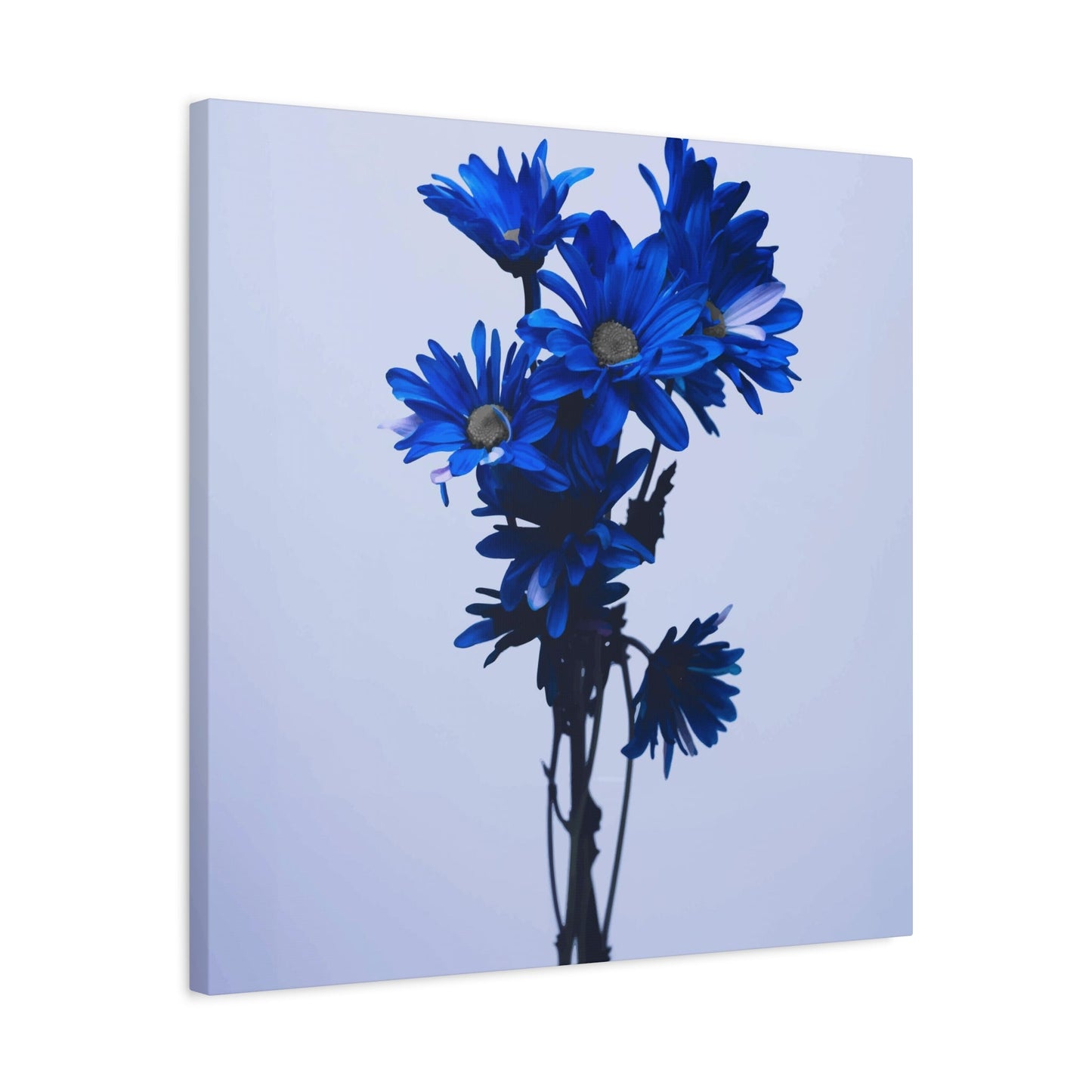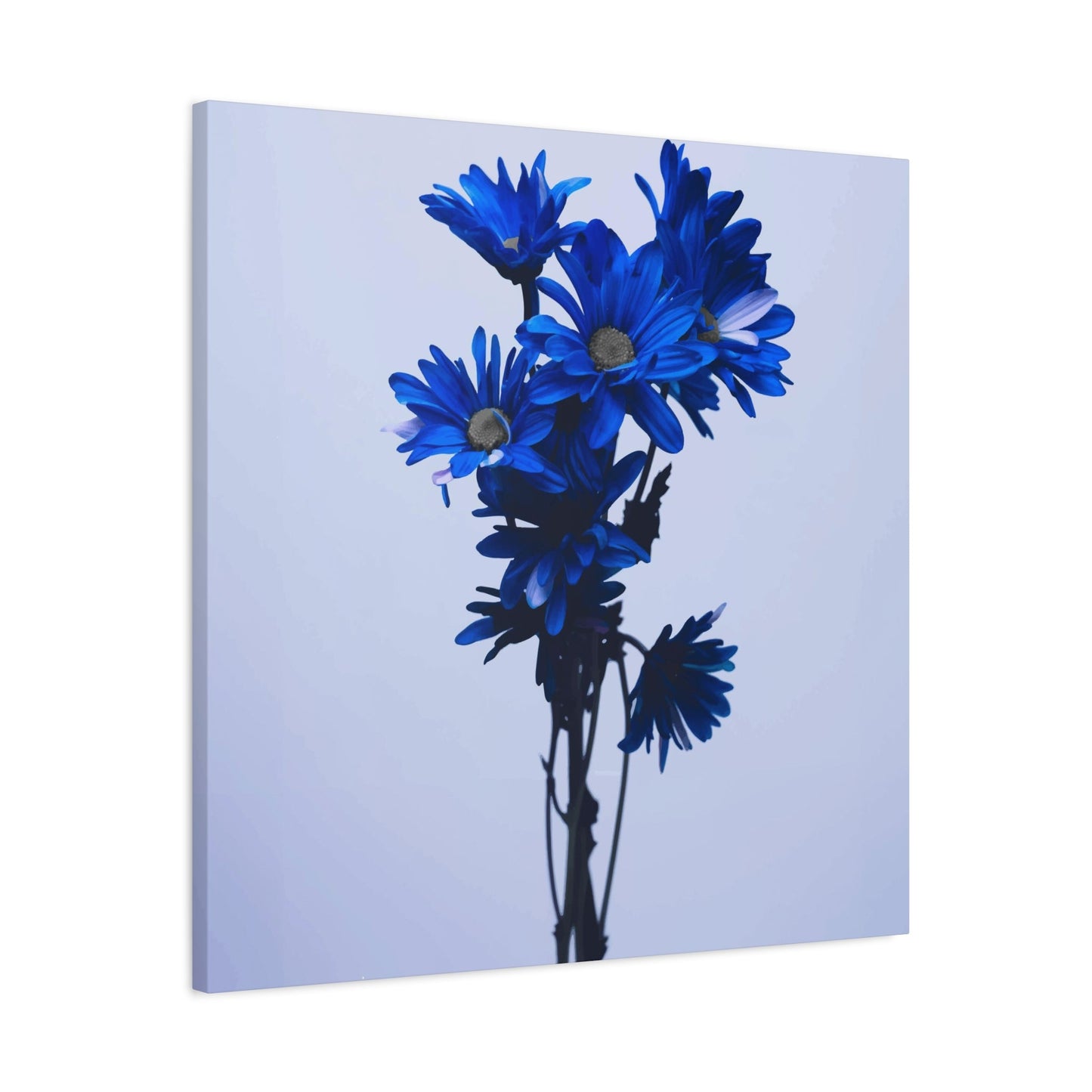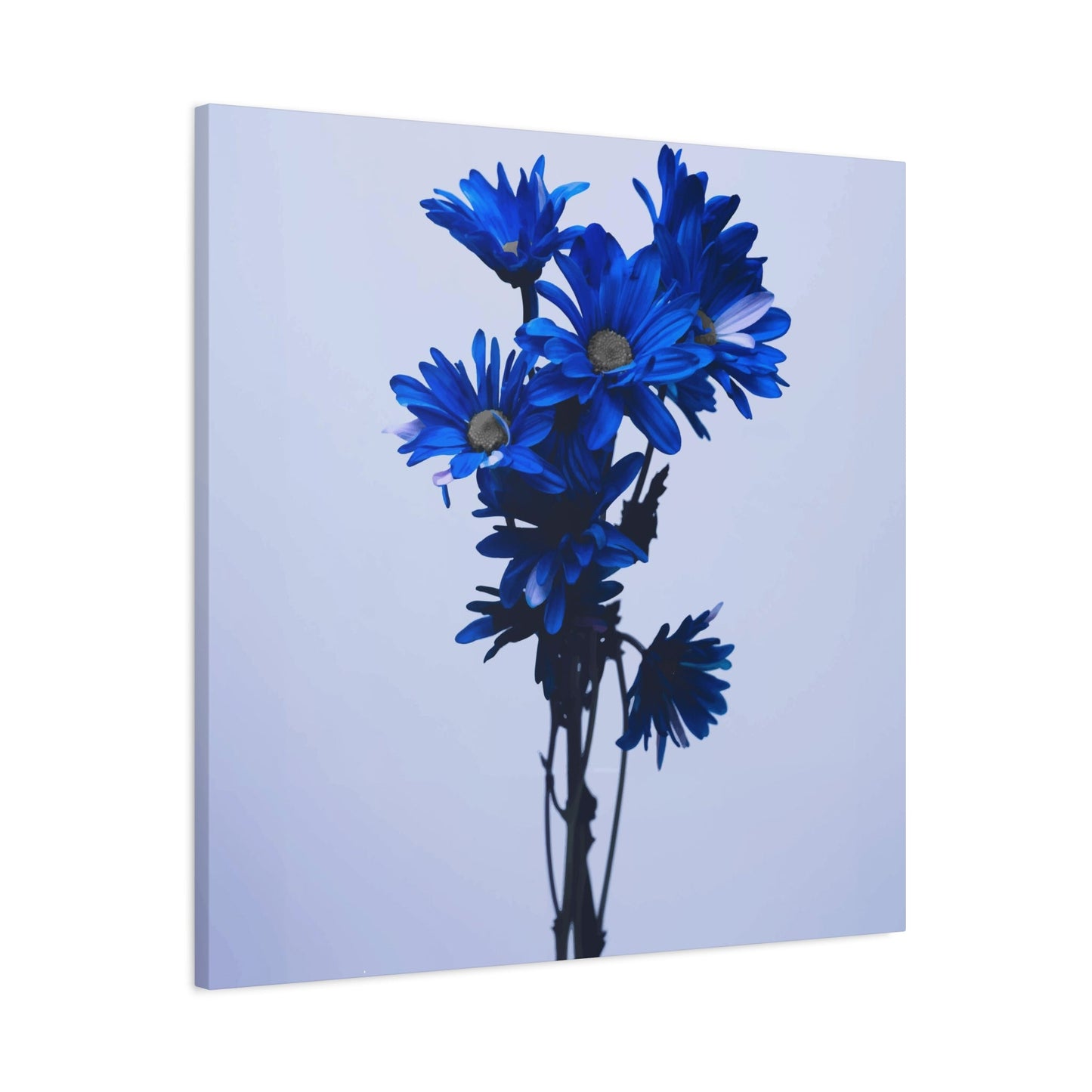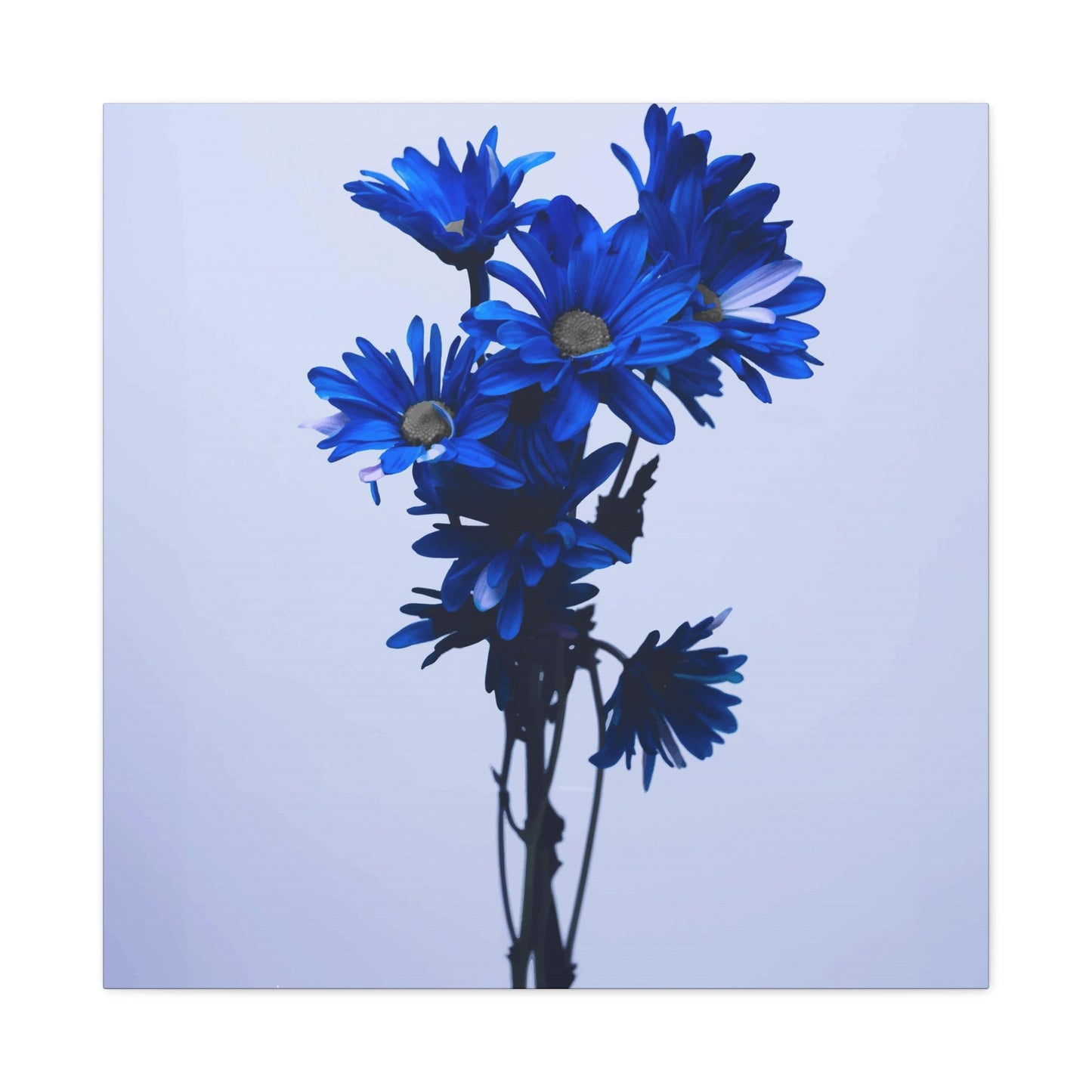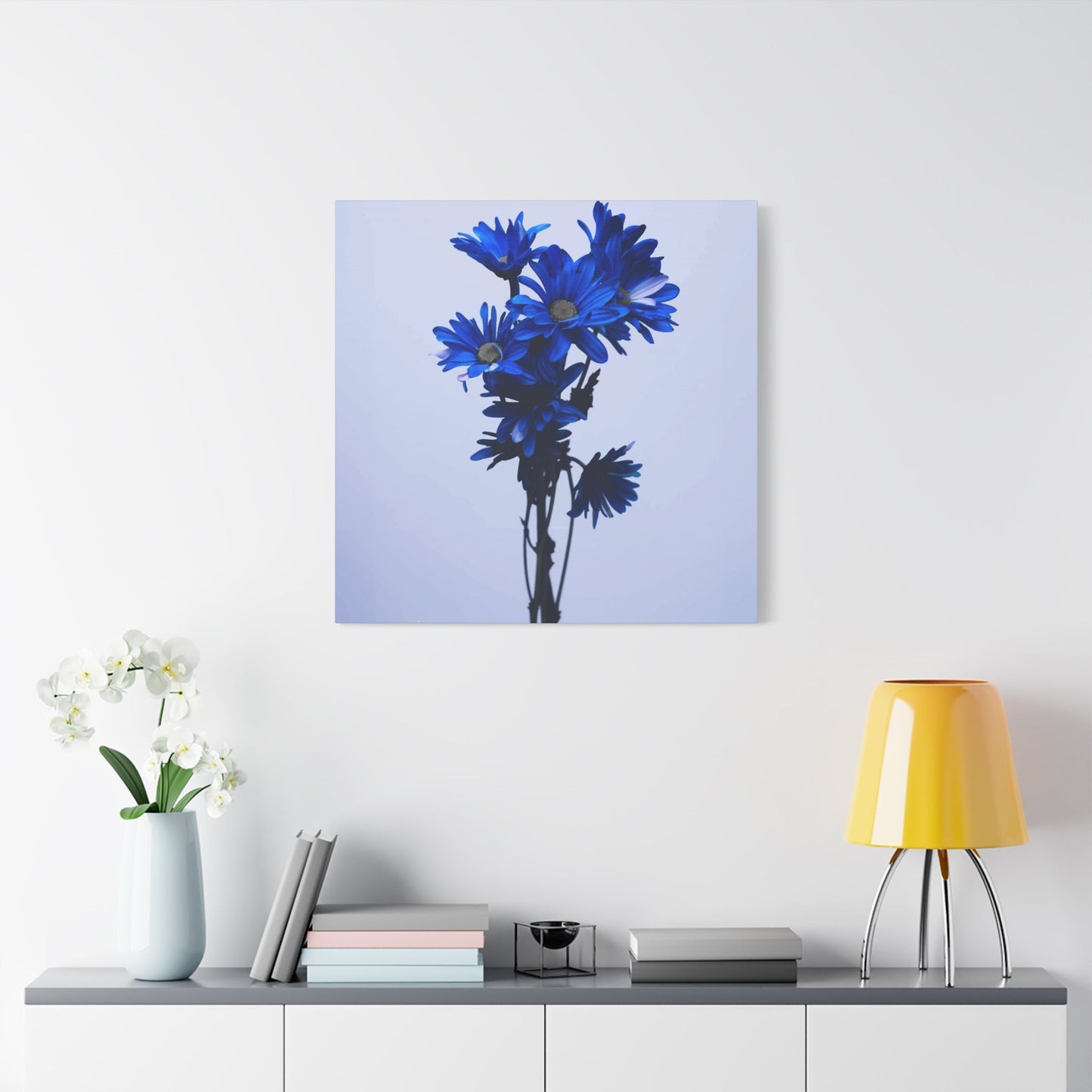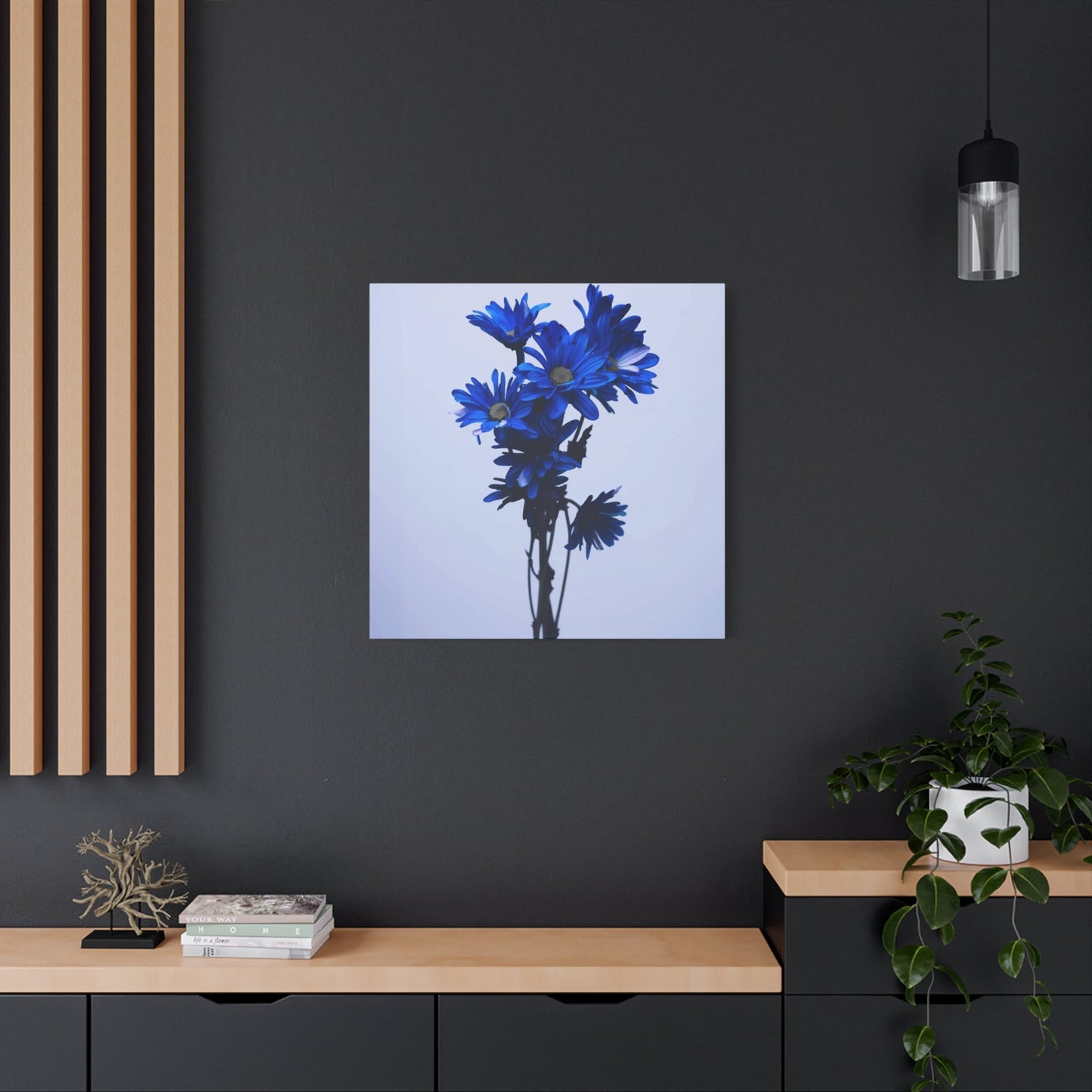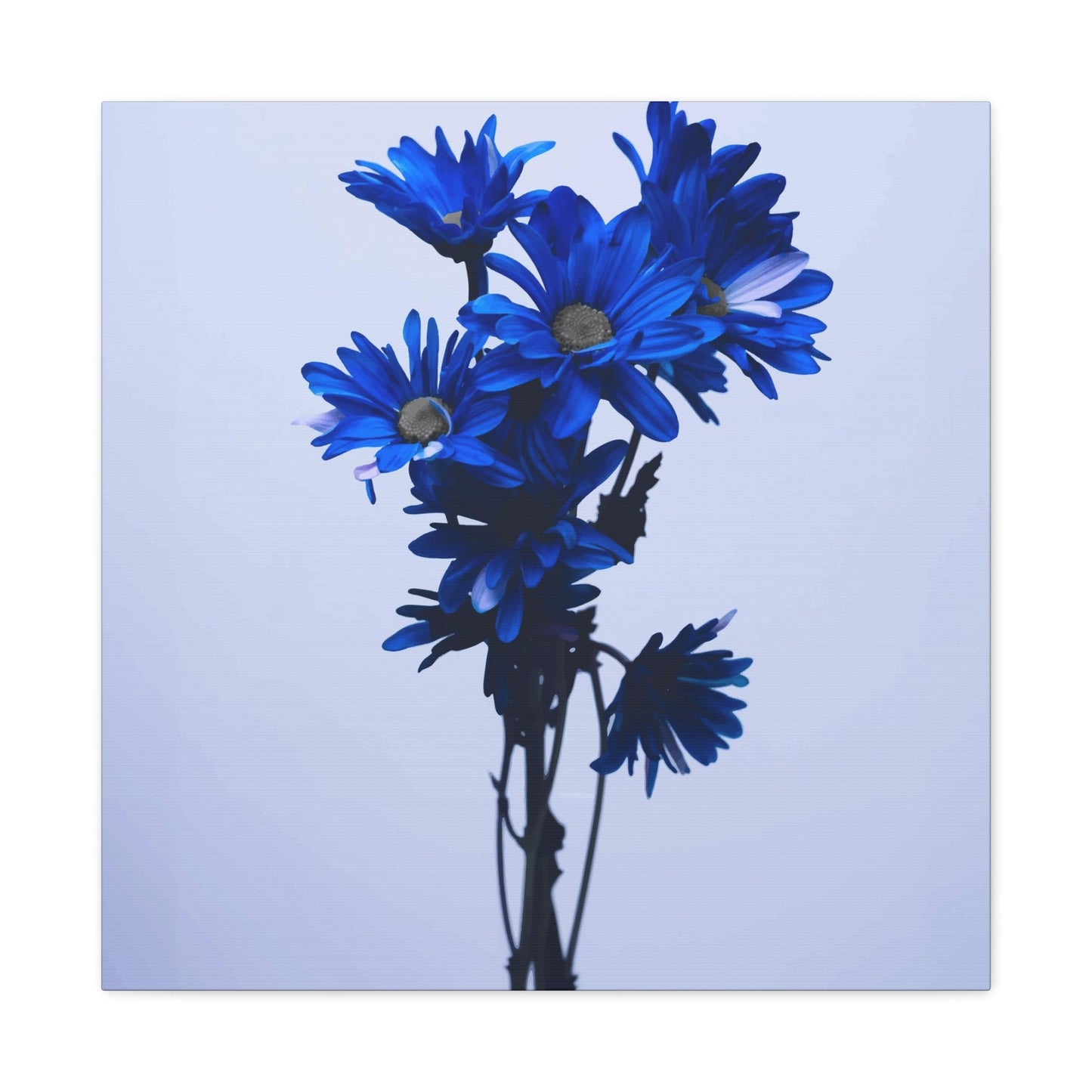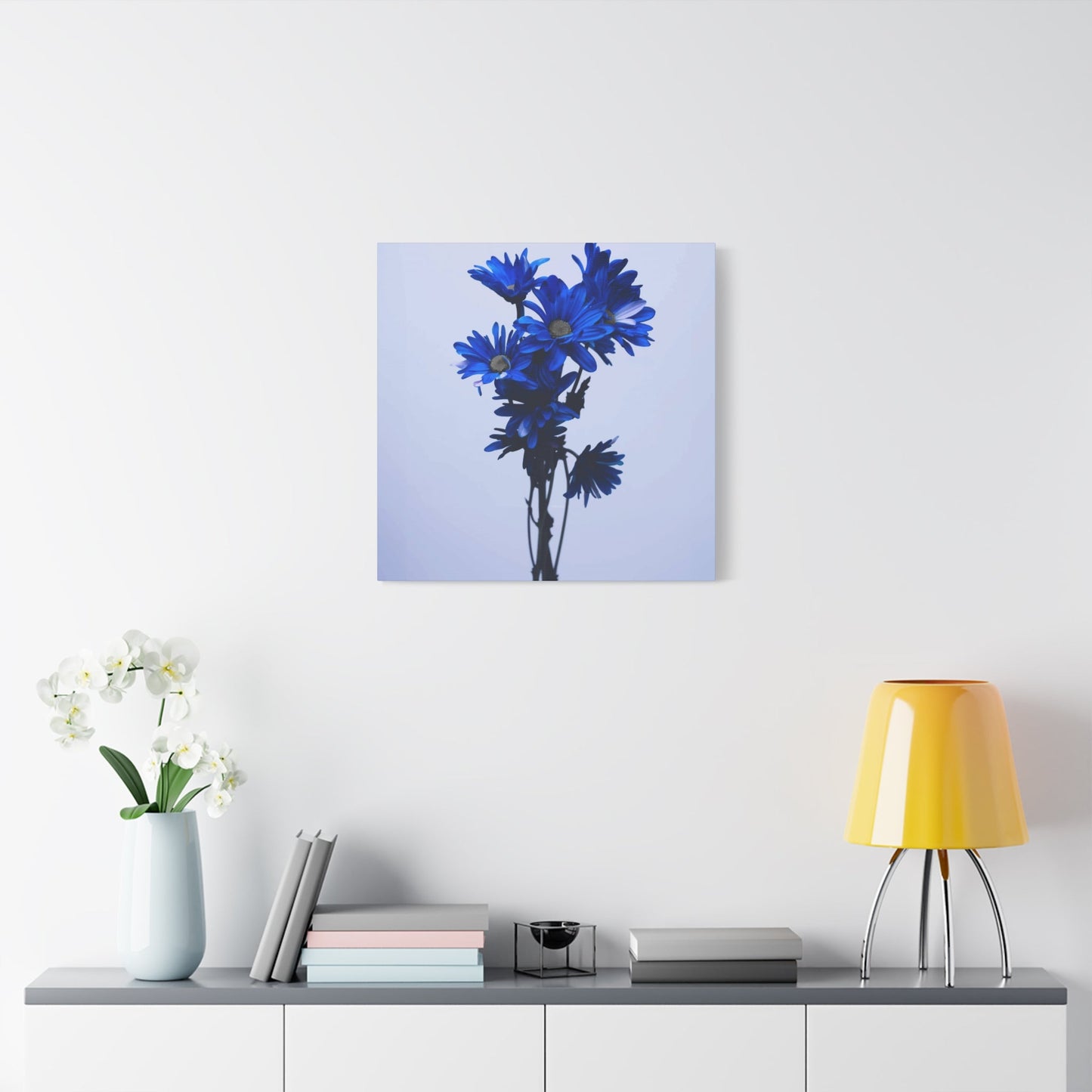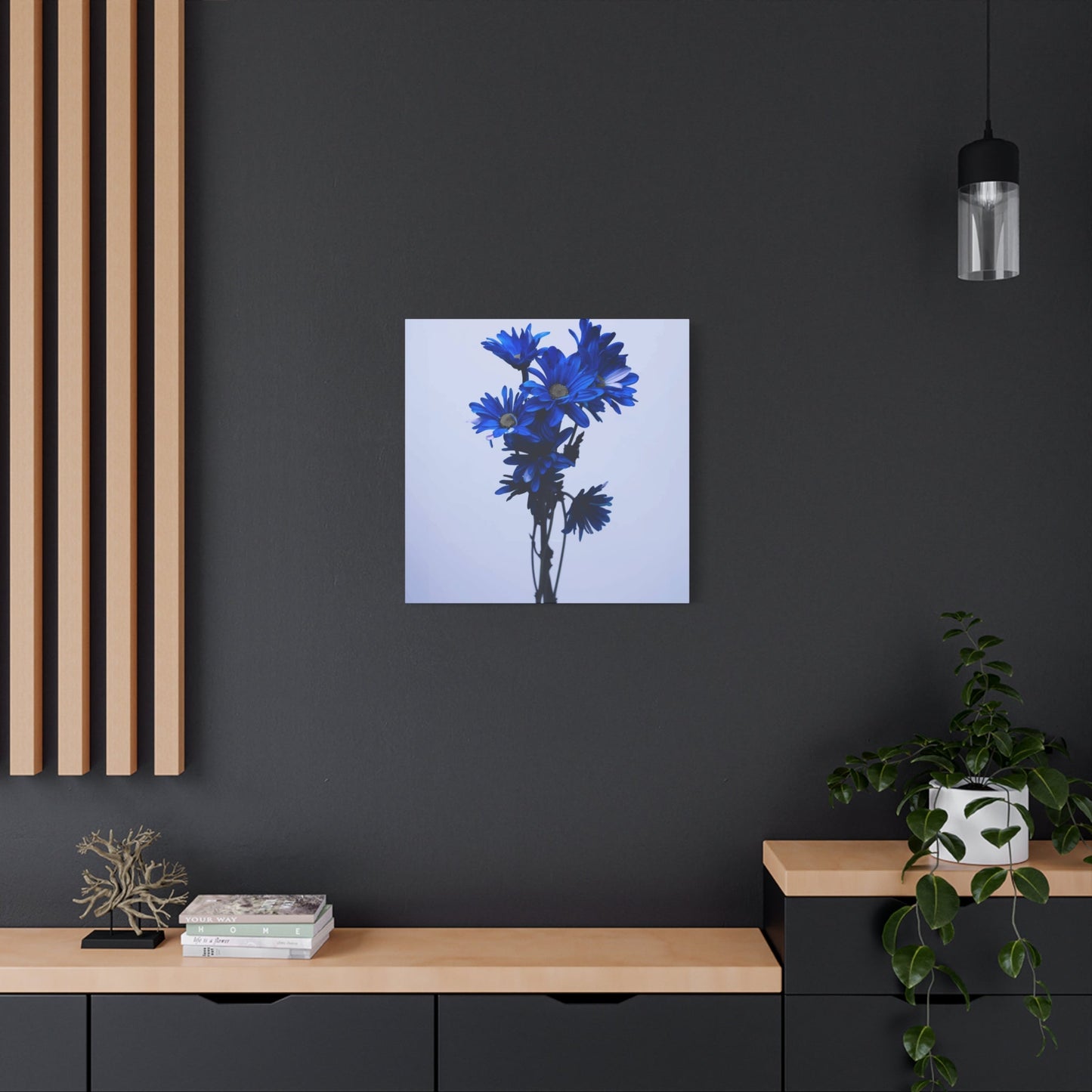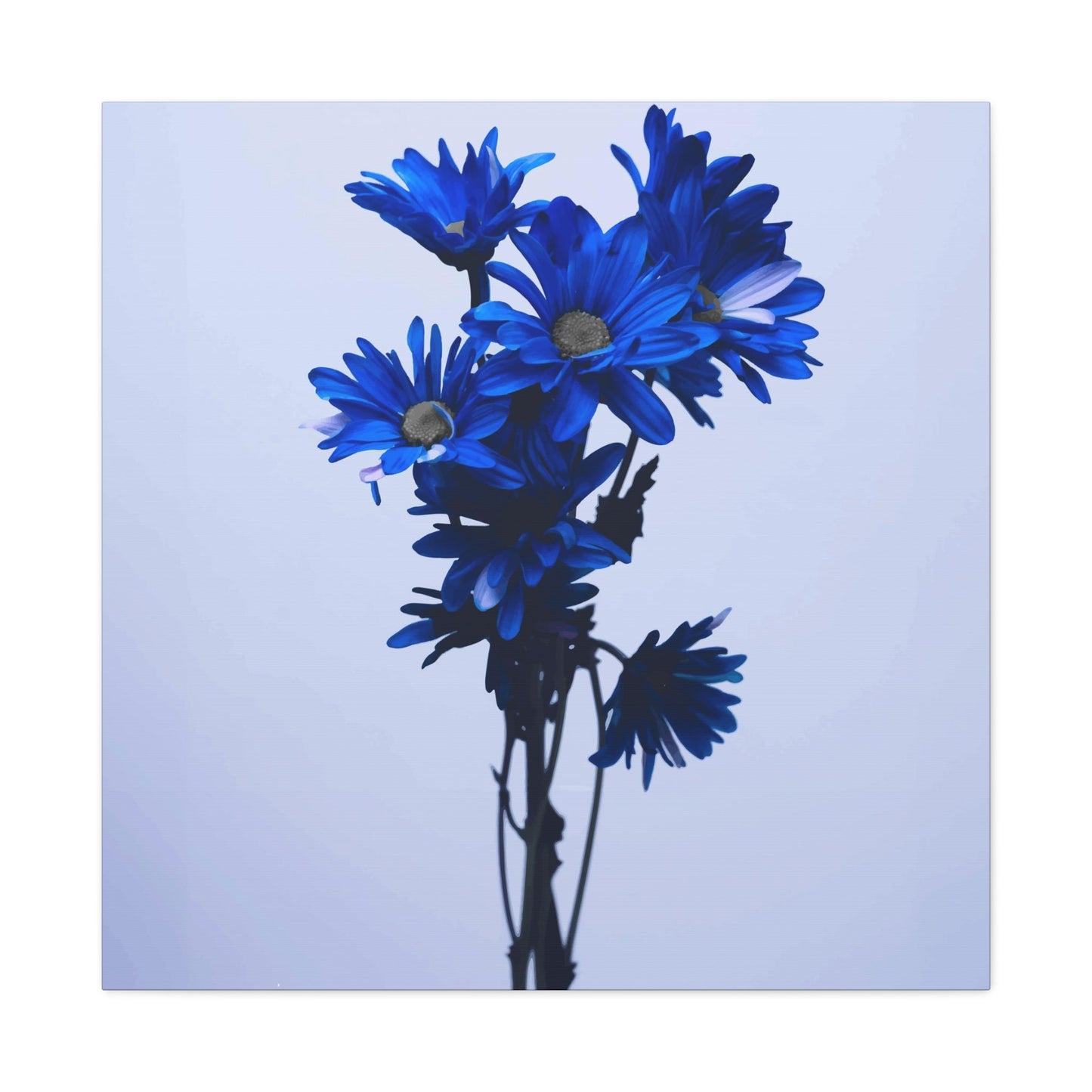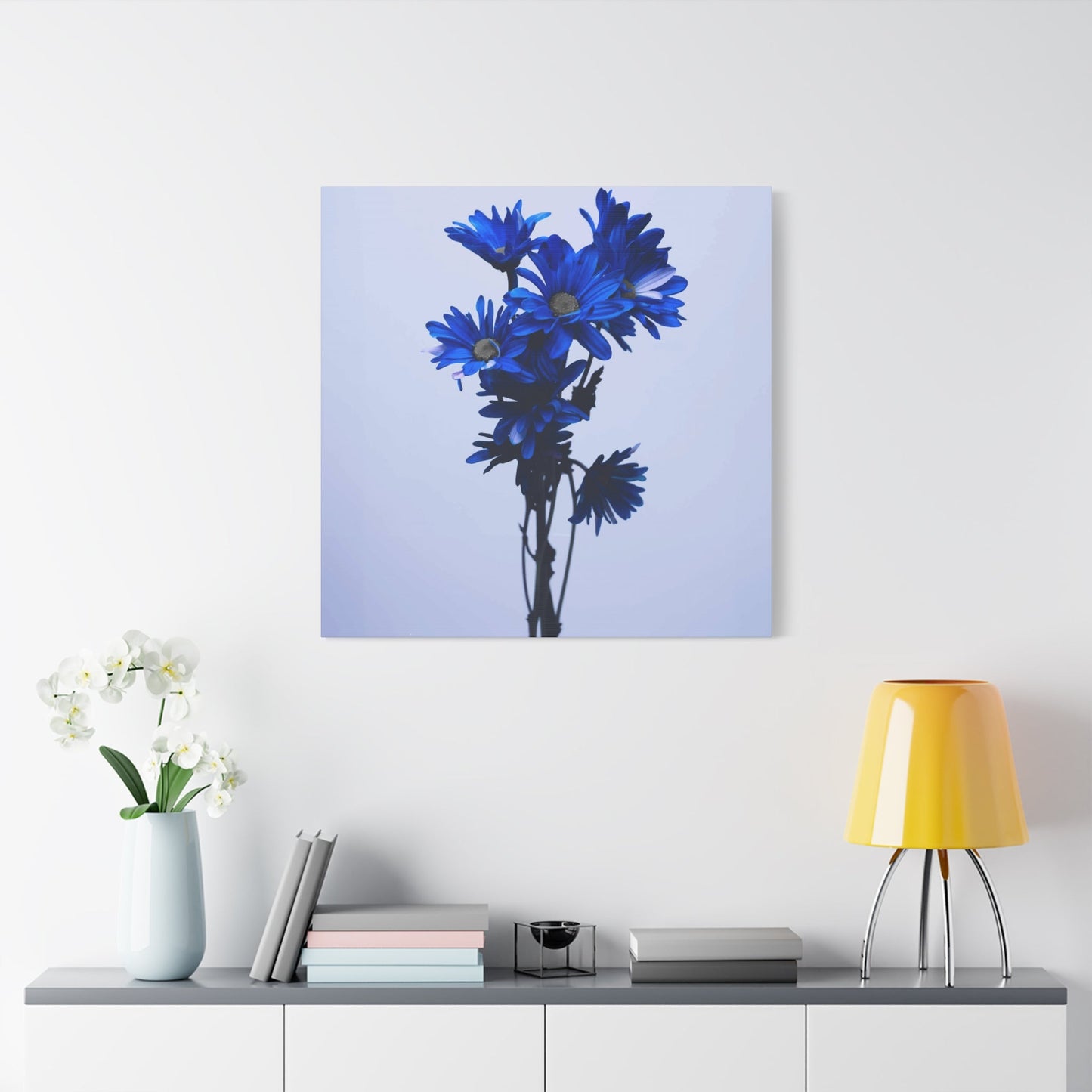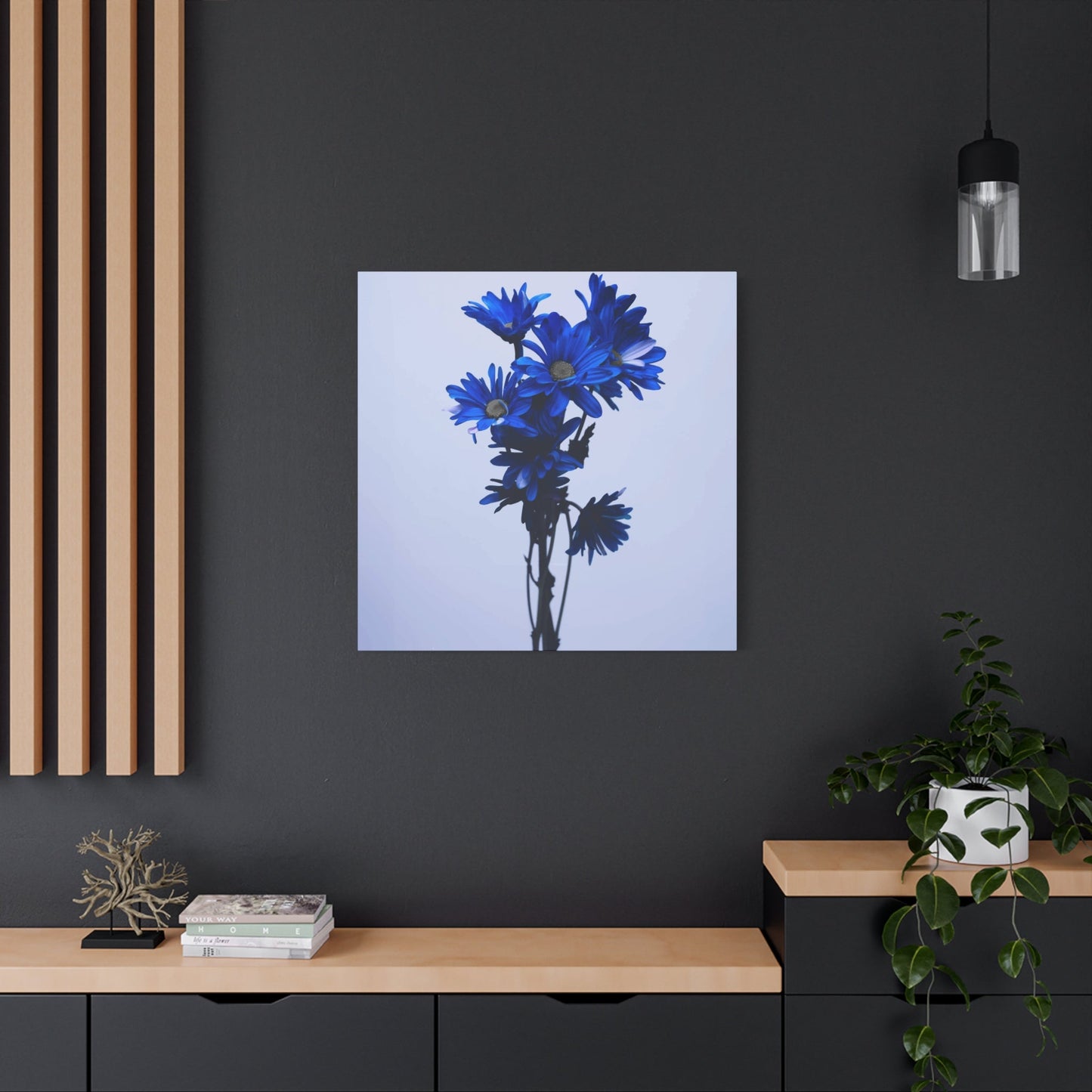Transform Your Living Space with Enchanting Blue Flower Wall Art
Blue flower wall art represents one of the most captivating and versatile decorative choices for contemporary homes. This remarkable artistic medium combines the tranquil essence of azure blooms with sophisticated design principles, creating visual masterpieces that elevate any interior space. The profound impact of floral imagery, particularly in calming blue hues, extends far beyond mere decoration, influencing mood, atmosphere, and the overall aesthetic harmony of residential environments.
The allure of blue flower wall art lies in its unique ability to bridge the gap between natural beauty and artistic expression. These stunning pieces capture the ephemeral grace of botanical specimens while translating their essence into permanent artistic statements. Whether rendered in watercolor delicacy, oil painting richness, or contemporary digital artistry, blue flower wall art transforms ordinary walls into extraordinary focal points that command attention and inspire contemplation.
Understanding the Profound Appeal of Blue Flower Wall Art
The magnetism of blue flower wall art stems from a complex interplay of color theory, natural symbolism, and human perception. Blue, universally recognized as nature's most calming color, evokes feelings of serenity, stability, and infinite possibility. When combined with the organic forms of floral motifs, these artworks create a harmonious balance between tranquility and vitality that resonates deeply with viewers.
Scientific research has consistently demonstrated that blue environments promote relaxation and reduce stress levels. The incorporation of blue flower wall art into living spaces harnesses this natural response, creating sanctuaries of peace within busy modern homes. The gentle curves and flowing lines of flower petals soften harsh architectural elements, while the various shades of blue—from powder soft to midnight deep—add layers of visual interest without overwhelming the senses.
Moreover, flowers themselves carry powerful symbolic meanings across cultures. They represent growth, renewal, beauty, and life's fleeting precious moments. Blue flowers, though relatively rare in nature, symbolize mystery, the unattainable, and dreams realized. This symbolic richness adds depth and meaning to blue flower wall art, making each piece not merely decorative but emotionally resonant.
Exploring Diverse Styles and Artistic Approaches
Blue flower wall art encompasses an extraordinary range of artistic styles and interpretations. Traditional botanical illustrations present flowers with scientific precision, showcasing intricate details of petals, stems, and leaves in various blue tonalities. These pieces appeal to those who appreciate classical elegance and botanical accuracy, often featuring rare blue species like delphiniums, hydrangeas, cornflowers, or imagined azure blooms.
Abstract interpretations of blue flower wall art push boundaries, using loose brushstrokes, geometric elements, and experimental color combinations to suggest rather than literally depict floral forms. These contemporary pieces invite personal interpretation and work exceptionally well in modern interior design schemes. The abstract approach allows artists to explore emotional responses to flowers rather than their physical appearance, resulting in deeply personal and evocative artworks.
Impressionistic blue flower wall art captures the fleeting effects of light and atmosphere on floral subjects. These pieces often feature soft, blurred edges and luminous color transitions that create dreamy, ethereal qualities. The impressionistic style particularly suits blue flower themes, as the color naturally lends itself to atmospheric effects and subtle gradations.
Minimalist blue flower wall art strips away unnecessary elements to focus on essential forms and colors. These pieces often feature single blooms or simplified floral arrangements against clean backgrounds, emphasizing the pure beauty of blue floral forms. Minimalist approaches work exceptionally well in contemporary interiors where simplicity and elegance are paramount.
Selecting Perfect Blue Flower Wall Art for Different Rooms
The versatility of blue flower wall art makes it suitable for virtually every room in the home, though different spaces benefit from specific stylistic approaches and sizes. Living rooms, serving as primary gathering spaces, can accommodate large-scale blue flower wall art pieces that make bold statements. Triptychs or series of coordinated pieces work particularly well above sofas or entertainment centers, creating cohesive visual narratives that tie rooms together.
Bedrooms benefit from gentler, more subdued blue flower wall art that promotes restfulness and relaxation. Soft watercolor pieces or dreamy impressionistic works in pale blue tones create calming environments conducive to sleep and reflection. The positioning of bedroom art should consider natural light sources and viewing angles from the bed, ensuring that the artwork enhances rather than disrupts the room's peaceful atmosphere.
Kitchen and dining areas offer unique opportunities for blue flower wall art that complements culinary themes. Botanical illustrations of edible blue flowers like borage or violets create interesting conversational pieces while maintaining the decorative appeal. The kitchen environment requires consideration of humidity and temperature fluctuations when selecting artwork materials and protective measures.
Home offices and study spaces benefit from blue flower wall art that inspires creativity while maintaining focus. The calming properties of blue can help reduce work-related stress, while floral imagery provides visual relief from screens and documents. Smaller pieces or series of coordinated prints work well in these functional spaces without overwhelming work areas.
Bathrooms present special challenges for blue flower wall art due to humidity and moisture concerns. However, properly protected pieces or moisture-resistant reproductions can transform these utilitarian spaces into spa-like retreats. Blue flower themes naturally complement water elements and can create cohesive design narratives throughout bathroom spaces.
Color Coordination and Interior Design Harmony
Successfully incorporating blue flower wall art into existing interior design schemes requires careful consideration of color relationships and visual balance. Blue's versatility allows it to work with numerous color palettes, from monochromatic schemes to bold complementary combinations. Understanding these relationships ensures that blue flower wall art enhances rather than conflicts with existing décor elements.
Monochromatic blue schemes create sophisticated, cohesive environments by utilizing various shades and tints of blue throughout the space. Blue flower wall art becomes a natural focal point in such schemes, with surrounding elements supporting and echoing the artwork's color story. Texture variation becomes crucial in monochromatic spaces, with different materials and finishes preventing visual monotony.
Complementary color schemes pair blue with orange or warm yellow tones, creating dynamic visual tension that energizes spaces. Blue flower wall art in such schemes often benefits from warm accent colors in frames or surrounding décor elements. These combinations work particularly well in spaces where visual stimulation and energy are desired.
Analogous color schemes combine blue with neighboring colors like green or purple, creating harmonious and naturally pleasing environments. Blue flower wall art fits seamlessly into such palettes, often incorporating multiple hues that echo throughout the space. These schemes feel particularly natural and are often inspired by outdoor color relationships.
Neutral backdrops provide ideal settings for blue flower wall art to shine. Gray, beige, cream, or white walls allow the artwork to become the primary color source in the room, creating focal points that draw attention and admiration. Neutral schemes offer flexibility for changing accent colors and seasonal decorations without requiring artwork changes.
Size Considerations and Proportional Relationships
The scale of blue flower wall art dramatically affects its impact and integration within interior spaces. Understanding proportional relationships between artwork and room elements ensures harmonious visual balance and prevents common decorating mistakes. Professional designers rely on established guidelines while also trusting visual intuition to create pleasing arrangements.
Large-scale blue flower wall art makes bold statements and can anchor entire room designs. These impressive pieces work best on prominent walls with adequate viewing distance and minimal competing visual elements. The rule of thirds often applies, with artwork occupying roughly one-third to two-thirds of the available wall space for optimal visual impact.
Medium-sized pieces offer versatility and can be used individually or grouped with other artworks. Blue flower wall art in medium formats works well above furniture pieces like beds, sofas, or console tables. The artwork should relate proportionally to the furniture below, typically spanning 50-75% of the furniture's width for balanced appearance.
Small blue flower wall art pieces excel in intimate settings or as part of larger gallery wall arrangements. These works can be grouped in odd numbers or organized in geometric patterns to create visual interest and narrative flow. Small pieces also work well in transitional spaces like hallways or powder rooms where subtle beauty is preferred.
Gallery walls featuring multiple blue flower wall art pieces allow for creative storytelling and personal expression. These arrangements can combine different sizes, styles, and frames while maintaining color cohesion through the blue floral theme. Planning gallery walls requires careful measurement and often benefits from paper templates before final hanging.
Framing and Presentation Considerations
The presentation of blue flower wall art significantly influences its visual impact and longevity. Frame selection, matting choices, and protective glazing all contribute to the artwork's final appearance and preservation. Understanding these elements helps collectors make informed decisions that enhance their blue flower wall art investments.
Frame materials and finishes should complement both the artwork and surrounding décor. Natural wood frames in light finishes enhance the organic nature of blue flower wall art while providing warmth and texture. Dark frames create dramatic contrast and work well with bold or high-contrast blue flower pieces. Metal frames offer contemporary aesthetics and work particularly well with abstract or minimalist blue flower wall art.
Matting provides breathing space around artwork and prevents direct contact between the piece and glazing. White and cream mats are classic choices that work with virtually any blue flower wall art, while colored mats can echo accent colors in the room or artwork. The mat width should be proportional to the artwork size, with larger pieces requiring wider mats for proper visual balance.
Protective glazing shields blue flower wall art from dust, moisture, and UV damage while allowing clear viewing. Standard glass provides basic protection but can create reflections that interfere with viewing. Museum-quality glazing reduces reflections and filters harmful UV rays, though at higher cost. Acrylic glazing offers lighter weight and shatter resistance but may be more prone to scratching.
Conservation considerations become important for valuable or sentimental blue flower wall art pieces. Acid-free mats and backing materials prevent chemical damage over time, while proper mounting prevents stress and warping. Climate control in display areas helps preserve artwork integrity and prevents damage from humidity fluctuations.
Creating Cohesive Collections and Series
Building collections of blue flower wall art allows for sophisticated interior design narratives while providing flexibility for seasonal changes and evolving tastes. Cohesive collections create visual unity while offering opportunities for personal expression and artistic exploration. Understanding collection principles helps enthusiasts build meaningful and visually pleasing arrangements.
Thematic coherence provides the foundation for successful blue flower wall art collections. Themes might focus on specific flower types, artistic styles, color gradations, or seasonal representations. Maintaining thematic consistency while allowing for individual piece personality creates collections that feel intentional and thoughtfully curated.
Size variation within collections prevents monotony and creates visual rhythm. Combining large anchor pieces with smaller supporting works establishes hierarchy and guides viewer attention through the collection. The arrangement of different sizes should follow design principles like the rule of odds or golden ratio proportions for optimal visual appeal.
Style mixing within blue flower wall art collections can create dynamic and personally meaningful displays. Combining photographic pieces with painted works, or mixing contemporary styles with traditional approaches, adds depth and interest to collections. However, maintaining some unifying elements—like color palette or subject matter—prevents collections from appearing random or chaotic.
Seasonal rotation capabilities allow blue flower wall art collections to evolve throughout the year. Spring collections might emphasize fresh, light blue blooms, while winter displays could feature deeper, more contemplative blue tones. This rotation keeps interior spaces feeling fresh and responsive to natural cycles.
Lighting Considerations for Optimal Display
Proper lighting transforms blue flower wall art from mere decoration into stunning focal points that command attention and admiration. Understanding how different light sources affect blue pigments and floral imagery helps create optimal viewing conditions while protecting artwork from damage. Professional-quality lighting can dramatically enhance the beauty and impact of blue flower wall art collections.
Natural lighting provides the most accurate color representation for blue flower wall art, though it varies throughout the day and seasons. North-facing windows offer consistent, cool light that complements blue tones particularly well. However, direct sunlight can fade pigments over time, making UV-filtering glazing or strategic placement essential for preservation.
Artificial lighting offers control and consistency for blue flower wall art display. LED technology has revolutionized art lighting by providing bright, cool illumination with minimal heat generation and excellent color rendering. Adjustable LED track lighting allows for precise positioning and intensity control, creating dramatic effects that highlight specific pieces or collections.
Picture lighting attached directly to frames provides focused illumination for individual blue flower wall art pieces. These specialized fixtures minimize shadows and provide even light distribution across the artwork surface. Battery-operated picture lights offer installation flexibility without requiring electrical work, making them ideal for renters or frequently rearranged displays.
Ambient lighting creates overall room illumination that supports blue flower wall art viewing without overwhelming individual pieces. Recessed ceiling lights, table lamps, and floor lamps contribute to general lighting levels while allowing accent lighting to create dramatic focus on specific artworks. The interplay between ambient and accent lighting creates depth and visual interest in display areas.
Maintenance and Preservation Strategies
Preserving the beauty and integrity of blue flower wall art requires understanding proper care and maintenance practices. Different artistic media require specific care approaches, while environmental factors play crucial roles in artwork longevity. Implementing proper preservation strategies ensures that blue flower wall art remains beautiful for generations.
Dust accumulation poses the most common threat to blue flower wall art, gradually diminishing colors and creating an aged appearance. Regular dusting using soft, dry brushes or microfiber cloths removes surface particles without damaging artwork surfaces. Framed pieces benefit from annual cleaning of both artwork and frame components.
Environmental control prevents many common forms of artwork damage. Maintaining stable temperature and humidity levels prevents expansion and contraction that can crack or warp artwork. Avoiding temperature extremes and sudden changes protects both artwork materials and frame components from stress damage.
UV protection preserves color integrity in blue flower wall art by filtering harmful radiation that causes fading. Museum-quality glazing provides excellent UV protection, while window films can filter sunlight in display areas. Rotating artwork periodically distributes UV exposure and prevents uneven fading patterns.
Professional conservation becomes necessary for valuable or damaged blue flower wall art pieces. Trained conservators can repair damage, clean artwork safely, and provide guidance on proper preservation practices. Investment in professional conservation often proves worthwhile for pieces with significant monetary or sentimental value.
Contemporary Trends and Emerging Styles
The world of blue flower wall art continues evolving as artists explore new materials, styles, and concepts. Contemporary trends reflect changing aesthetic preferences while honoring traditional floral art foundations. Understanding current movements helps collectors and decorators select pieces that feel fresh and relevant while maintaining timeless appeal.
Mixed media approaches combine traditional painting methods with contemporary materials like metallic accents, textural elements, or digital components. These innovative blue flower wall art pieces create dimensional effects and tactile interest that traditional flat artworks cannot achieve. The combination of familiar floral subjects with unexpected materials creates compelling contemporary statements.
Large-format photography has transformed blue flower wall art possibilities, allowing for unprecedented detail and scale. High-resolution macro photography reveals intricate petal structures and color variations invisible to casual observation. These photographic works often blur the lines between scientific documentation and artistic expression.
Abstract geometric interpretations of blue flower wall art appeal to contemporary design sensibilities while maintaining floral inspiration. These pieces might use flower forms as starting points for geometric exploration, creating sophisticated artworks that suggest rather than literally depict botanical subjects. Such approaches work particularly well in modern and transitional interior design schemes.
Digital art and printable formats have democratized blue flower wall art access while enabling customization and personalization. Artists can create original digital works or reinterpret traditional pieces using contemporary digital tools. Print-on-demand services allow consumers to access high-quality reproductions at various sizes and formats.
Cultural and Symbolic Significance
Blue flower wall art carries rich cultural meanings that vary across different societies and historical periods. Understanding these symbolic layers adds depth to artwork selection and appreciation while connecting contemporary homes to broader human traditions of floral symbolism and artistic expression.
In Western cultures, blue flowers often symbolize tranquility, loyalty, and infinite possibilities. Blue roses, though not naturally occurring, represent the impossible made possible and are often associated with dreams and mystery. Blue flower wall art incorporating these symbolic elements can create meaningful personal statements within interior spaces.
Eastern traditions assign different meanings to blue floral imagery, often connecting them to spiritual enlightenment and meditation. Blue lotus flowers hold particular significance in Buddhist and Hindu traditions, representing purity of spirit and the triumph over material desires. Blue flower wall art inspired by these traditions can create contemplative spaces conducive to reflection and inner peace.
Victorian flower language assigned specific meanings to different blue blooms, creating complex symbolic vocabularies that informed social interactions and personal expressions. Blue violets represented faithfulness and modesty, while blue delphiniums symbolized fun and lightness. Contemporary blue flower wall art can incorporate these historical meanings to create layered, meaningful displays.
Modern interpretations of blue flower symbolism often focus on environmental and conservation themes. Blue flowers as rare natural phenomena can represent the fragility of ecosystems and the importance of preservation. Blue flower wall art can serve as subtle reminders of environmental responsibility while providing beauty and inspiration.
Seasonal Adaptability and Flexibility
One of the remarkable qualities of blue flower wall art lies in its seasonal versatility and ability to complement changing interior design needs throughout the year. Unlike more specific seasonal decorations, blue flower wall art provides consistent beauty while allowing for subtle seasonal enhancements through lighting, accessories, and surrounding décor elements.
Spring presentations of blue flower wall art can emphasize fresh, vibrant blue tones that echo the renewal and growth of the natural world. Lighter frames, increased natural lighting, and the addition of fresh blue flowers in nearby vases create cohesive seasonal narratives. The association of blue with clear spring skies and early blooms makes blue flower wall art particularly appropriate for spring interior transformations.
Summer displays benefit from the cooling visual effects of blue flower wall art, providing psychological relief from heat and bright sunshine. Deeper blue tones can create refreshing focal points in sun-drenched rooms, while the association with water and shade makes blue flower wall art psychologically cooling. Pairing with light fabrics and minimal accessories enhances the cooling effect.
Autumn interpretations of blue flower wall art can incorporate warmer lighting and richer accent colors to complement the season's palette. The contrast between cool blue artwork and warm seasonal colors creates visual interest and prevents rooms from feeling cold as daylight hours decrease. Adding textural elements like woven baskets or warm wood tones balances the cool blue tones.
Winter presentations allow blue flower wall art to provide color and life in otherwise dormant seasons. The association with evergreen plants that maintain color through winter makes blue flower wall art symbolically appropriate for cold months. Enhanced artificial lighting and warm accent colors create cozy environments that celebrate both beauty and comfort.
Investment Value and Market Considerations
Blue flower wall art represents not only aesthetic enhancement but also potential financial investment, particularly for original artworks or limited-edition pieces. Understanding market factors and investment potential helps collectors make informed decisions while building meaningful collections that provide both beauty and value.
Original blue flower wall art by established artists often appreciates in value over time, particularly as artists gain recognition or as specific movements become historically significant. Research into artist backgrounds, exhibition histories, and market performance provides insight into potential investment value. However, personal enjoyment should remain the primary motivation for artwork acquisition.
Limited edition prints and reproductions of popular blue flower wall art pieces can offer accessibility to renowned works while maintaining some collectible value. Understanding edition sizes, printing methods, and authentication procedures helps collectors make informed decisions about reproduction purchases. Quality reproductions can provide excellent decorative value even without significant investment potential.
Emerging artists creating blue flower wall art may represent both aesthetic and investment opportunities. Supporting new talent while acquiring unique pieces at accessible prices can prove rewarding both personally and financially. Attending local art shows, gallery openings, and artist studio tours provides opportunities to discover promising blue flower wall art creators.
Market trends in blue flower wall art reflect broader interior design movements and cultural preferences. Understanding these trends helps predict future demand and value appreciation while ensuring that current purchases remain aesthetically relevant. However, timeless quality and personal appeal often prove more valuable than trend-following in artwork selection.
Creating Personal Connections and Meaning
The most successful blue flower wall art selections create personal connections between viewers and artworks, transforming mere decoration into meaningful elements of daily life. Understanding how to identify and nurture these connections ensures that blue flower wall art purchases provide lasting satisfaction and emotional resonance.
Personal associations with specific blue flowers or artistic styles can guide selection decisions and create meaningful displays. Childhood memories of blue flower gardens, travel experiences with blue floral landscapes, or emotional connections to particular artists can inform choices that resonate personally. These connections often prove more valuable than aesthetic considerations alone.
Commissioning custom blue flower wall art allows for ultimate personalization while supporting individual artists. Working with artists to create pieces that incorporate personal elements, specific color preferences, or meaningful flower varieties results in truly unique artworks. The creative collaboration process often proves as rewarding as the finished artwork.
Documenting the stories behind blue flower wall art pieces creates family histories and meaningful legacies. Recording acquisition circumstances, artist information, or personal significance ensures that future generations understand and appreciate inherited artworks. These stories often become as valuable as the artworks themselves.
Sharing blue flower wall art appreciation with others through hosting, gift-giving, or community involvement extends the positive impact of beautiful artwork. Creating environments where others can appreciate and enjoy blue flower wall art spreads beauty and inspiration while building community connections around shared aesthetic values.
Room-by-Room Placement Strategies
Optimizing the placement of blue flower wall art requires understanding each room's function, lighting conditions, and design requirements. Strategic positioning ensures that artwork enhances rather than competes with room activities while creating cohesive design narratives throughout the home.
Entryway presentations of blue flower wall art create immediate impressions and set tonal expectations for the entire home. Welcoming blue flower pieces should be appropriately scaled for the space while withstanding the traffic and lighting variations common in entry areas. The psychological impact of entering a home decorated with beautiful blue flower wall art creates positive associations that extend throughout the visit.
Living room installations of blue flower wall art often serve as primary focal points that anchor entire design schemes. The scale and positioning of these pieces should consider conversation areas, viewing distances, and relationship to major furniture pieces. Multiple coordinated pieces can create gallery walls or triptych arrangements that provide visual interest and design cohesion.
Bedroom placements of blue flower wall art should promote tranquility and restfulness while providing beautiful focal points visible from the bed. The calming properties of blue make it ideal for sleep environments, while floral imagery connects to natural cycles and growth. Positioning should consider both bedside viewing and overall room balance.
Kitchen and dining room blue flower wall art can complement culinary activities while providing visual relief from functional elements. Moisture resistance becomes important in these environments, making framed pieces or sealed artworks preferable. Botanical themes can reinforce connections between food preparation and natural ingredients.
Bathroom installations require careful consideration of humidity and moisture exposure. Protected blue flower wall art pieces can transform utilitarian spaces into spa-like retreats while complementing water themes and cleansing rituals. Proper ventilation and protective measures ensure artwork longevity in challenging environments.
Home office displays of blue flower wall art can inspire creativity while providing visual relief from work-related stress. The calming properties of blue can counterbalance work pressure, while beautiful imagery provides psychological restoration during busy workdays. Positioning should avoid glare on computer screens while remaining visible during breaks.
Color Psychology and Emotional Impact
The psychological effects of blue flower wall art extend far beyond simple decoration, influencing mood, behavior, and overall well-being in profound ways. Understanding these effects helps optimize artwork selection and placement for maximum positive impact on daily life and emotional health.
Blue's inherent calming properties make blue flower wall art particularly effective for stress reduction and relaxation promotion. The color's association with vast skies and deep oceans triggers psychological responses that reduce anxiety and promote feelings of peace and stability. These effects become particularly pronounced in high-stress environments or busy households.
The combination of blue with floral imagery creates layered psychological responses that enhance the color's natural calming effects. Flowers universally represent beauty, growth, and life's positive aspects, while their organic forms soften harsh architectural elements. This combination creates environments that feel both peaceful and nurturing.
Different shades of blue in flower wall art produce varying psychological effects, allowing for targeted mood enhancement in different spaces. Light blue tones promote serenity and openness, making them ideal for bedrooms and meditation spaces. Deeper blue hues create feelings of stability and sophistication, working well in formal areas or professional environments.
The seasonal psychology of blue flower wall art provides year-round emotional benefits that adapt to changing needs and circumstances. Spring associations with renewal and growth complement seasonal mood improvements, while summer's cooling effects provide psychological relief from heat stress. Autumn and winter presentations offer color and vitality during typically dormant periods.
Artistic Movements and Historical Context
Blue flower wall art draws from rich artistic traditions and historical movements that span centuries of human creative expression. Understanding these contexts enhances appreciation while connecting contemporary homes to broader cultural narratives and artistic achievements.
Botanical illustration traditions provide scientific accuracy and detailed observation that inform much contemporary blue flower wall art. These historical approaches emphasized precise color representation and structural accuracy, creating artworks that served both scientific and aesthetic purposes. Modern interpretations often honor these traditions while incorporating contemporary artistic sensibilities.
Impressionist movements revolutionized flower painting by emphasizing light effects and atmospheric conditions over precise detail. Blue flower wall art inspired by impressionist traditions captures fleeting moments and emotional responses to floral beauty. These approaches work particularly well in spaces where mood and atmosphere take precedence over precise representation.
Abstract expressionist influences appear in contemporary blue flower wall art that emphasizes emotional content over literal representation. These pieces may use flower forms as starting points for color and compositional exploration, creating artworks that suggest rather than depict specific botanical subjects. Such approaches appeal to contemporary design sensibilities.
Contemporary digital art movements have expanded blue flower wall art possibilities through new tools and distribution methods. Digital artists can manipulate color, scale, and composition in ways impossible with traditional media, creating innovative artworks that push creative boundaries while maintaining floral inspiration.
Sustainability and Environmental Considerations
The environmental impact of blue flower wall art encompasses production methods, material choices, and lifecycle considerations that conscious consumers increasingly consider important. Understanding these factors helps make responsible choices that align personal aesthetic preferences with environmental values.
Sustainable production methods for blue flower wall art include the use of non-toxic pigments, recycled or responsibly sourced papers, and environmentally friendly printing processes. Artists and publishers who prioritize sustainability often provide information about their environmental practices, allowing consumers to make informed choices that reflect their values.
Local sourcing of blue flower wall art reduces transportation environmental impacts while supporting regional artists and economies. Purchasing directly from local artists or galleries minimizes packaging and shipping requirements while fostering community connections and cultural support. Local art often reflects regional flora and cultural traditions.
Longevity and durability considerations affect the environmental impact of blue flower wall art over time. Well-made pieces that withstand years of display without replacement represent better environmental choices than frequently replaced lower-quality alternatives. Investment in quality often aligns with environmental responsibility.
End-of-life considerations for blue flower wall art include recycling possibilities for frames and mounting materials, as well as donation or resale options that extend artwork lifecycles. Planning for eventual disposition ensures that beautiful pieces continue providing enjoyment rather than becoming waste.
Global Perspectives and Cultural Variations
Blue flower wall art reflects diverse cultural approaches to floral symbolism and artistic expression that vary across global traditions and regional preferences. Understanding these variations enhances appreciation while providing inspiration for personalized collections that reflect individual heritage and interests.
Asian artistic traditions often emphasize simplicity and negative space in blue flower wall art, creating contemplative pieces that invite meditation and reflection. These approaches prioritize essential elements while eliminating unnecessary details, resulting in artworks that feel both complete and open to personal interpretation.
European traditions in blue flower wall art often emphasize technical skill and historical continuity, drawing from centuries of botanical illustration and formal painting traditions. These approaches value accuracy and craftsmanship while incorporating contemporary sensibilities and materials. The result often combines classical elegance with modern appeal.
American contemporary approaches to blue flower wall art frequently emphasize innovation and personal expression over traditional techniques or subjects. These pieces may combine multiple media, experiment with scale and color, or incorporate cultural references that create uniquely American artistic statements. Such diversity reflects the nation's multicultural heritage.
Indigenous artistic traditions worldwide offer unique perspectives on floral imagery that can inspire contemporary blue flower wall art selections. These traditions often emphasize spiritual connections to nature and symbolic meanings that differ from European-influenced approaches. Incorporating these perspectives can create more meaningful and culturally rich displays.
Therapeutic and Wellness Benefits
Blue flower wall art provides documented therapeutic benefits that extend beyond aesthetic pleasure to encompass measurable improvements in mental health and overall well-being. Understanding these benefits helps justify art investments while optimizing placement and selection for maximum positive impact.
Stress reduction through blue flower wall art exposure occurs through multiple pathways including color psychology, nature connection, and beauty appreciation. Research consistently demonstrates that viewing natural imagery, particularly in calming colors, reduces cortisol levels and promotes relaxation responses. These effects accumulate over time with regular exposure.
Mood enhancement from blue flower wall art results from both color psychology and the positive associations most people have with flowers and natural beauty. Daily exposure to beautiful imagery can provide subtle but consistent mood support that contributes to overall emotional well-being and life satisfaction.
Creativity stimulation through exposure to blue flower wall art can benefit people in various creative fields or those seeking to enhance their creative thinking. The combination of natural forms and artistic interpretation provides inspiration while the calming effects of blue can reduce creative blocks and anxiety that inhibit innovative thinking.
Meditation and mindfulness practices can be enhanced by blue flower wall art that provides beautiful focal points for contemplation without being overstimulating or distracting. The natural forms and soothing colors support meditative states while the visual beauty maintains interest and engagement.
Seasonal Styling and Decorative Flexibility
The adaptability of blue flower wall art to changing seasonal décor needs makes it an excellent long-term investment that provides consistent beauty while supporting evolving decorative schemes. Understanding how to enhance and modify presentations throughout the year maximizes the impact and enjoyment of blue flower wall art collections.
Spring styling of blue flower wall art can emphasize fresh, renewal themes through the addition of light fabrics, bright accessories, and actual flowering plants that echo the artwork's themes. The natural association of blue with clear spring skies and early blooms makes these artworks particularly appropriate for spring interior refreshing.
Summer presentations can emphasize the cooling psychological effects of blue flower wall art through strategic lighting and the addition of elements that reinforce coolness and freshness. Light, airy fabrics and minimal accessories allow the artwork to provide visual cooling effects during hot weather while maintaining sophisticated design appeal.
Autumn adaptations might incorporate warmer lighting and seasonal accessories that complement rather than compete with blue flower wall art. The contrast between cool artwork and warm seasonal elements creates visual interest while preventing interiors from feeling cold as temperatures drop and daylight hours decrease.
Winter presentations can emphasize blue flower wall art as sources of color and life during dormant seasons. Enhanced artificial lighting and carefully selected warm accents can create cozy environments that celebrate the artwork's beauty while providing psychological warmth and comfort during challenging weather periods.
Quality Assessment and Selection Criteria
Evaluating the quality of blue flower wall art requires understanding multiple factors including artistic merit, production values, material quality, and long-term durability. Developing assessment skills helps ensure that purchases provide lasting satisfaction and value while avoiding common quality pitfalls.
Artistic composition quality in blue flower wall art involves evaluating balance, color relationships, and overall visual impact. Well-composed pieces create pleasing visual flow that draws and holds viewer attention without becoming overwhelming or monotonous. Understanding basic composition principles helps identify superior artworks.
Color quality encompasses both accuracy of reproduction and long-term stability of pigments and dyes used in blue flower wall art production. High-quality pieces maintain color integrity over time without fading, shifting, or deteriorating. Understanding different production methods helps predict color longevity.
Material quality affects both appearance and durability of blue flower wall art. Superior papers, canvases, and inks provide better color reproduction and longer lifespans than inferior alternatives. Understanding material specifications helps make informed purchasing decisions that balance cost with quality expectations.
Production standards vary widely in blue flower wall art, from museum-quality pieces to mass-produced decorative prints. Understanding different production levels helps set appropriate expectations and budgets while ensuring that purchases meet intended purposes and quality standards.
Creating Themed Collections and Narratives
Building cohesive blue flower wall art collections allows for sophisticated interior design storytelling while providing flexibility for personal expression and evolving tastes. Understanding collection principles helps create meaningful arrangements that feel intentional and thoughtfully curated rather than random or accidental.
Botanical accuracy themes focus blue flower wall art collections on scientifically accurate representations of specific species or flower families. These collections appeal to gardening enthusiasts and nature lovers while providing educational value and seasonal interest. Botanical themes work particularly well in studies, libraries, or garden rooms.
Artistic style themes organize blue flower wall art collections around specific artistic movements, techniques, or historical periods. These collections might focus on impressionist flower paintings, contemporary abstract interpretations, or photographic approaches. Style-based collections create sophisticated design statements that reflect personal aesthetic preferences.
Color progression themes arrange blue flower wall art pieces according to subtle color variations from light to dark or through different blue hue families. These collections create sophisticated color stories that can anchor entire room designs while providing visual interest through careful gradation and contrast.
Seasonal narrative themes organize blue flower wall art collections to tell stories about natural cycles, growth, and change. These collections might include pieces representing different stages of bloom or seasonal variations in the same flower species. Narrative themes add depth and meaning to decorative arrangements.
Professional Design Integration
Successfully integrating blue flower wall art into professional interior design schemes requires understanding design principles, client needs, and commercial considerations that differ from residential applications. Professional integration can inspire residential applications while demonstrating sophisticated approaches to artwork selection and display.
Office environments benefit from blue flower wall art that provides visual relief from work stress while maintaining professional aesthetics. The calming properties of blue can reduce workplace tension while floral imagery provides psychological restoration during stressful periods. Scale and positioning should consider work activities and professional image requirements.
Healthcare settings increasingly recognize the therapeutic benefits of blue flower wall art in patient care environments. These applications require specific considerations for infection control, durability, and patient psychology while maintaining healing and calming effects. Healthcare applications often inform residential wellness-focused installations.
Hospitality applications of blue flower wall art in hotels, restaurants, and other commercial spaces demonstrate sophisticated approaches to creating welcoming environments that encourage relaxation and positive experiences. These professional applications often showcase innovative display methods and scale relationships.
Retail environments use blue flower wall art to create appealing shopping atmospheres that encourage browsing and purchasing while reflecting brand identities and target market preferences. Retail applications demonstrate the power of artwork to influence behavior and create memorable experiences.
Conclusion
Blue flower wall art represents far more than simple decoration; it embodies a sophisticated approach to interior design that prioritizes both aesthetic beauty and emotional well-being. Throughout this comprehensive exploration, we have discovered how these remarkable artworks can transform ordinary living spaces into extraordinary environments that nurture the soul while delighting the senses.
The journey through various aspects of blue flower wall art reveals its remarkable versatility and enduring appeal. From understanding the profound psychological effects of blue's calming influence to exploring the rich cultural symbolism inherent in floral imagery, we see how these pieces connect us to fundamental human experiences of beauty, nature, and emotional resonance. The careful selection and placement of blue flower wall art creates environments that support daily life while providing constant sources of inspiration and tranquility.
The practical considerations we have examined—from room-specific placement strategies to seasonal adaptability—demonstrate that blue flower wall art offers both immediate impact and long-term value. These pieces adapt to changing needs and preferences while maintaining their essential beauty and emotional resonance. The investment in quality blue flower wall art pays dividends in daily enjoyment and enhanced living experiences that extend far beyond simple decorative function.
Perhaps most significantly, blue flower wall art provides opportunities for personal expression and meaningful connection within our homes. Whether selecting pieces that reflect personal memories, cultural heritage, or simply aesthetic preferences, these artworks become integral parts of our personal narratives and family histories. They create focal points for contemplation, conversation, and shared appreciation that strengthen our connections to beauty and to each other.
The therapeutic benefits of blue flower wall art extend into realms of wellness and mental health that are increasingly recognized as essential components of healthy living. In our fast-paced, often stressful world, the presence of beautiful, calming imagery provides necessary respite and emotional support.













